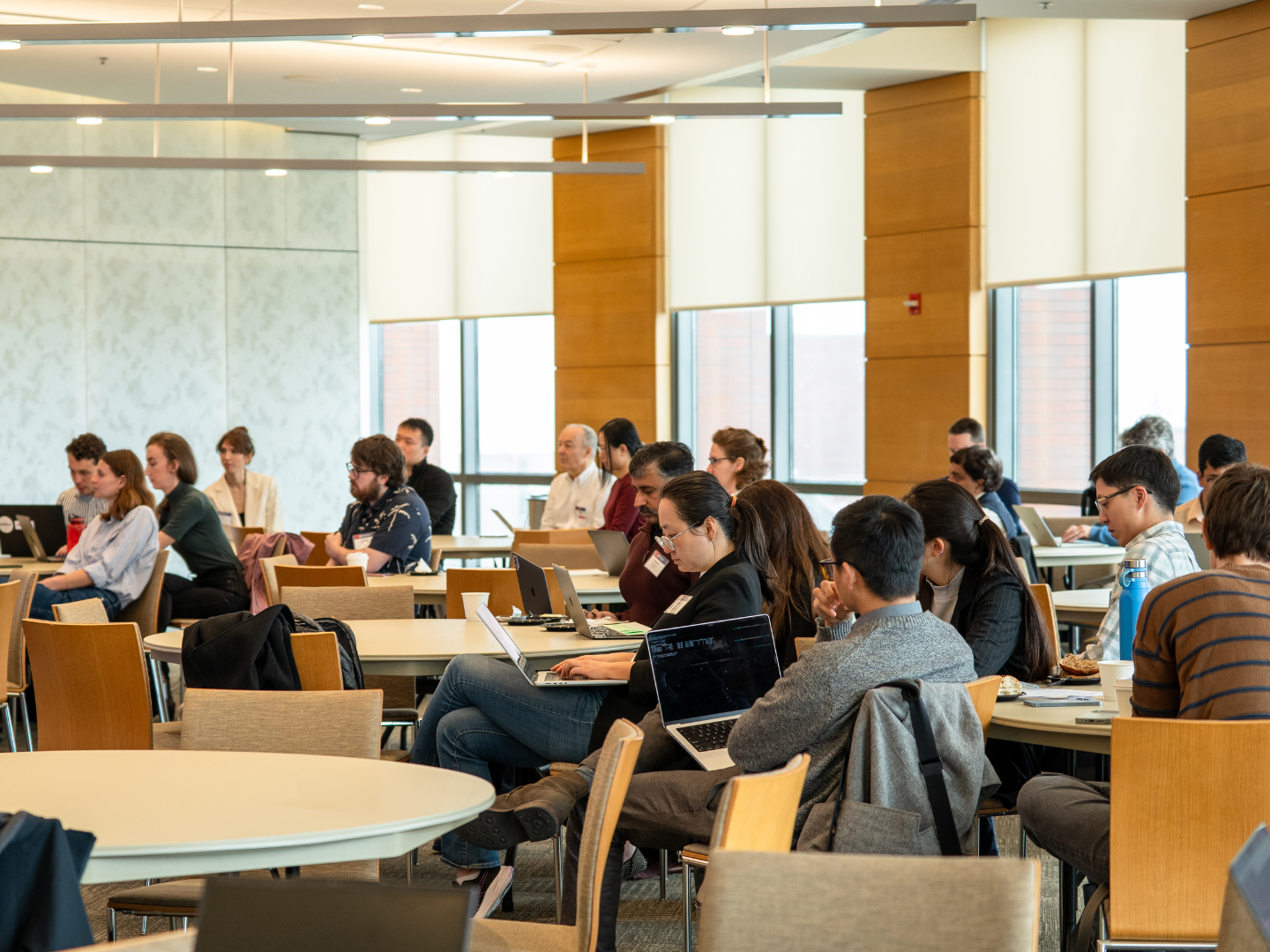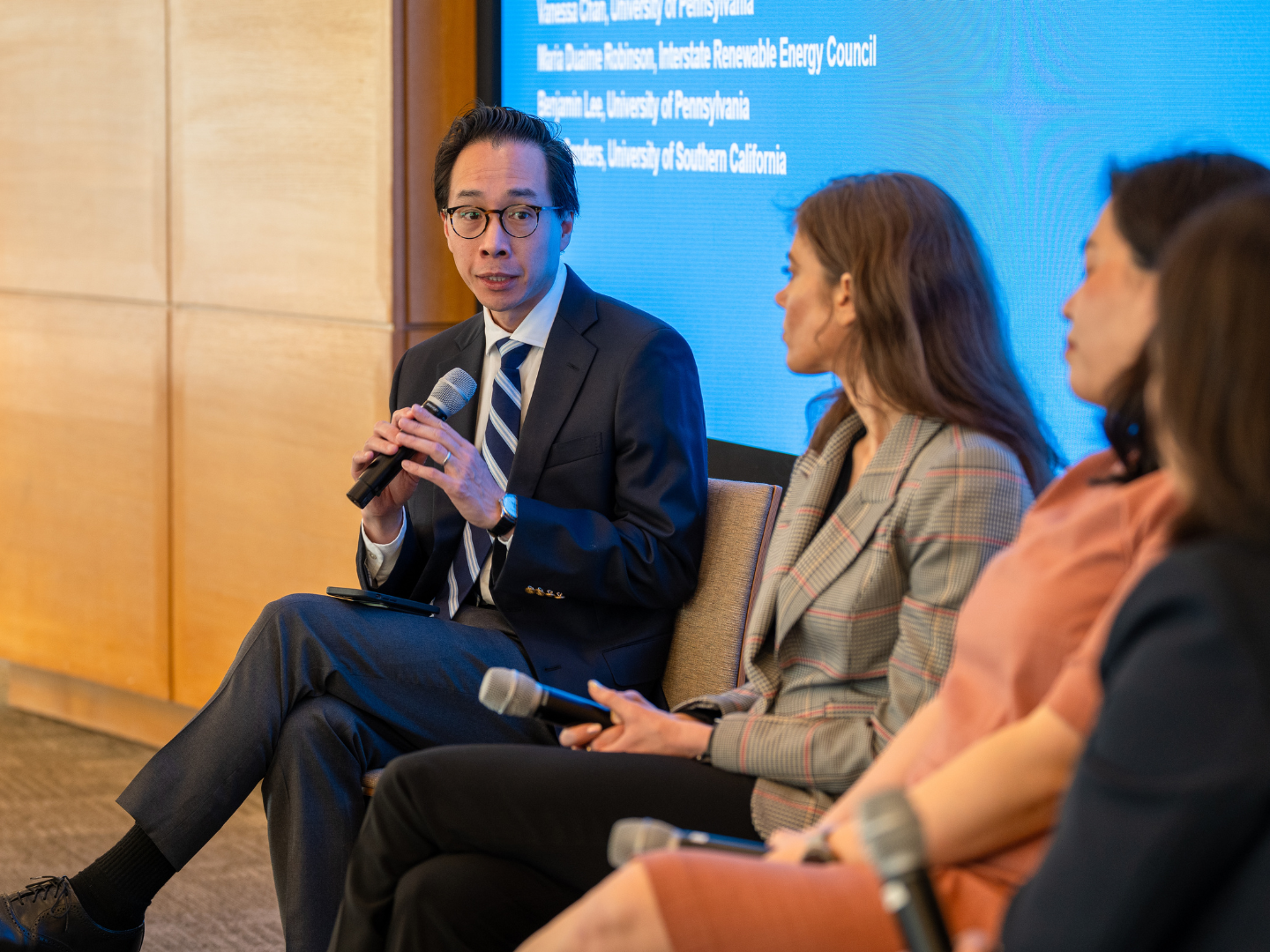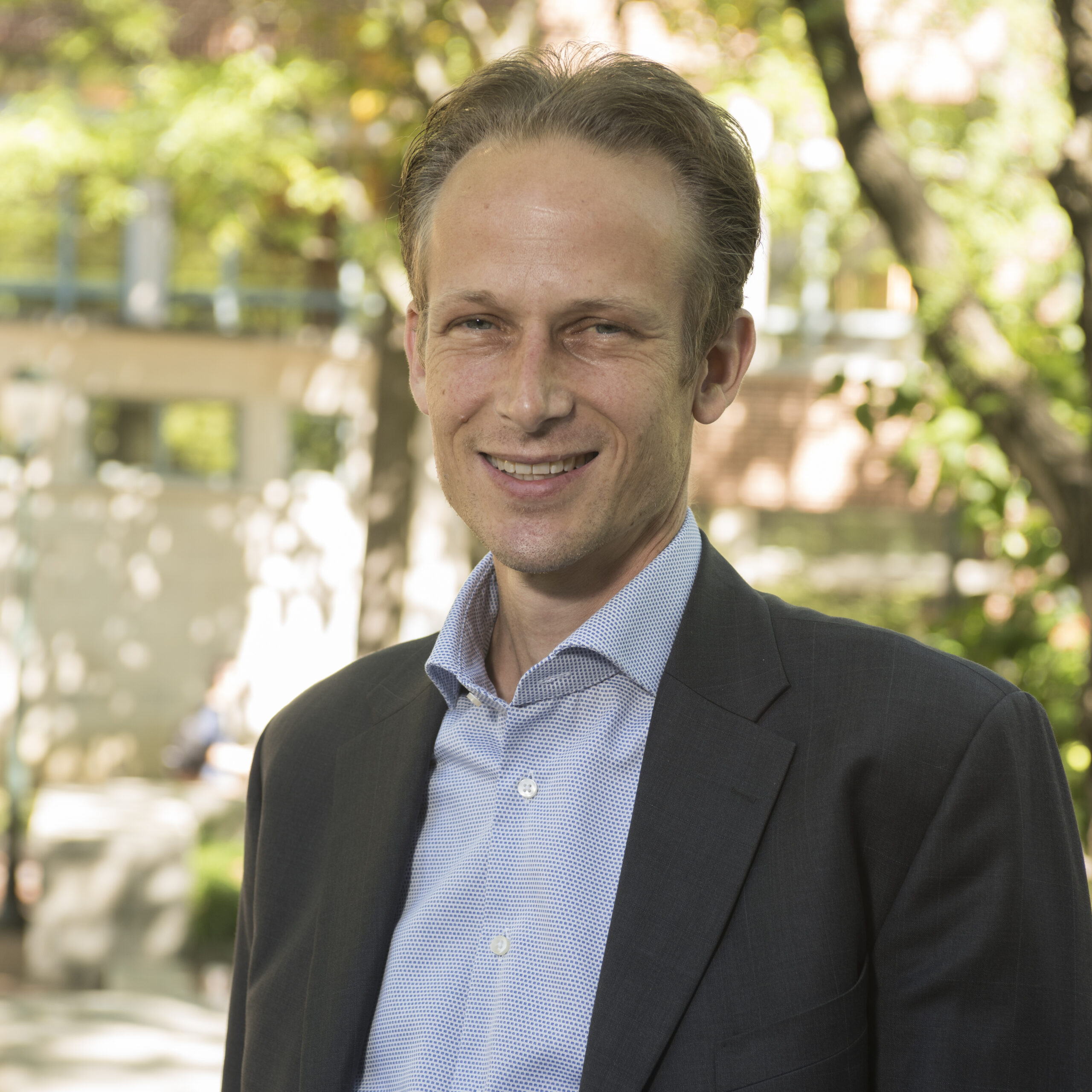Sustainable Computing: Can AI Be Energy Efficient?
The possibilities of artificial intelligence seem as infinite as its challenges. How can data centers, with their voracious power demands, be energy efficient? Who regulates these facilities and under what kinds of policies? And how can different software and hardware across the globe be coordinated to work for everyone?



As AI advances at breakneck speed, experts at Penn are urgently trying to answer these questions. Professors Arthur van Benthem and Benjamin C. Lee have assembled a multidisciplinary team of scientists, industry professionals, and policy leaders to explore solutions. The group met recently on campus for a two-day workshop, “AI Infrastructure: Foundations for Energy Efficiency and Scalability.”
“There are so many different perspectives on these questions that we wanted to bring everyone together to connect with each other. We want to have a broad impact,” said Lee, a professor in Penn’s Department of Electrical and Systems Engineering and Department of Computer and Information Science.
Lee and van Benthem are recipients of a National Science Foundation Expedition in Computing grant, which is one of the largest awards for sustainability research. The workshop was part of the funding for a project called Carbon Connect, of which Lee is co-director. He and van Benthem said the issues emerging from AI are complex but not impossible.

“There is still strong demand for scientific expertise in Washington, D.C., but researchers need to propose technologies, methodologies and policies that are practical and actionable.”
– Arthur van Benthem
“Computing in general has a massive environmental impact. Lots of data centers are going up, and they are using a lot of electricity” Lee said. “A second concern is around the manufacturing costs of semiconductors. It’s understanding all of these things and coming up with solutions.”
van Benthem, who is a professor in Wharton’s Department of Business Economics and Public Policy and co-director of the Wharton Climate Center, said two major policy issues arise with AI’s projected growth. The first is increasing the generation and transmission capacity of power grids, and the second is tapping as much green energy as possible.
“There are a lot of setbacks in terms of policy,” he said. “It’s not so clear that all the growth will be green, and the bottlenecks in modernizing and expanding the grid are pervasive.”
Workshop participants focused on several initiatives, including:
Energy Efficiency and Innovation
The data centers that power the computing processes of AI add significant load growth to regional energy grids, and running them will not be cheap – whether they rely on fossil fuel, renewables, or stored energy. Workshop participants said economic analyses need to reflect the true cost of providing electricity so that a full suite of potential grid responses are considered. A modern, decarbonized grid is possible with better coordination across system operators, electric and tech companies, and local, state, and federal jurisdictions.
Lee said there are several options to make AI more energy and carbon efficient, including building data centers in tandem with renewable energy generation and batteries, and developing smaller, specialized AI models for specific tasks that would require less energy.
“System architects could manage all of these assets intelligently, computing more when energy is abundant or computing less to ensure grid stability as needed,” he said.
Data Center Policy and Regulation
The era of flat electricity demand is over. The boom in AI, electric vehicles, and domestic manufacturing means power generation needs to expand – and fast. But the average interconnection time is more than five years.
Workshop participants voiced serious concerns about residential customers footing the bill for infrastructure investments and the higher wholesale prices that might result from the increased power demand. And with recent changes in state and federal policy, additional power generation may be more carbon-intensive than previously assumed.
“This has led to worries that power will become more expensive, less reliable, and less green unless these challenges are addressed heads on,” van Benthem said. “Rewarding flexibility in power usage could be an important step forward.”
For example, he said, data centers that are willing to scale back demand during peak hours could receive priority status in permitting processes. Another route may be to encourage data centers to follow a “bring your own generator” model to relieve pressure on the rest of the grid.
Carbon Accounting for the Tech Sector
Regulators and investors for years have been demanding carbon emissions reporting that is standardized, accurate, and auditable. The rapid growth of AI has only fueled that demand. The professors said improvements in carbon accounting is crucial in shaping investments and policies, and putting the AI and tech sectors on a more sustainable path. But years of discord has proven that it’s no easy task.
“The devil is in the details,” van Benthem said. “At the moment, tech companies use different approaches. For example, the methodologies used by Google and Microsoft yield much more conservative estimates of carbon savings than those used by Amazon and Meta.”
He said the unification of various reporting standards under the International Sustainability Standards Board (ISSB) is a positive step toward the collection of high-quality, comparable data and the standardization of methodologies.

“The media has focused on the challenges, and they are significant. But there is research that, if successful, could bend the curve on our carbon footprint.”
– Benjamin Lee
What’s the Path Forward?
Lee and van Benthem said the workshop was the first of several to keep the momentum going on finding solutions. And there is no time to waste. The United Nations Conference of Trade and Development projects the worldwide AI market to reach $4.8 trillion by 2033 – a 25-fold increase in a decade. The United States and China will account for the largest shares of that market.
“There is bipartisan enthusiasm about the U.S. being the global leader in AI,” van Benthem said. “Politicians increasingly see AI as crucial for national security and economic competitiveness. There is still strong demand for scientific expertise in Washington, D.C., but researchers need to propose technologies, methodologies and policies that are practical and actionable. That’s what the Carbon Connect project is aiming to achieve.”
Lee said the project’s ultimate goal isn’t just to provide achievable solutions to the AI challenge, it’s also to shape the public narrative around what is possible.
“It’s really about challenges and opportunities,” he said. “The media has focused on the challenges, and they are significant. But there is research that, if successful, could bend the curve on our carbon footprint.”
By Angie Basiouny


